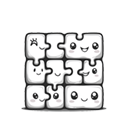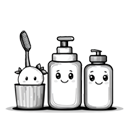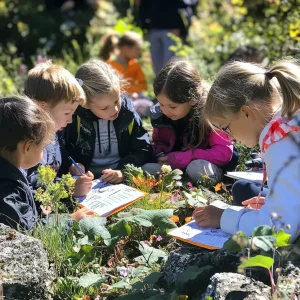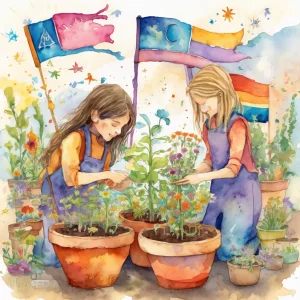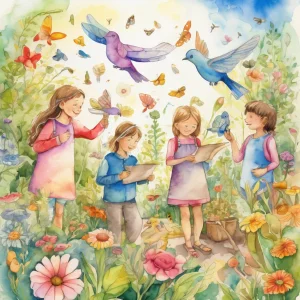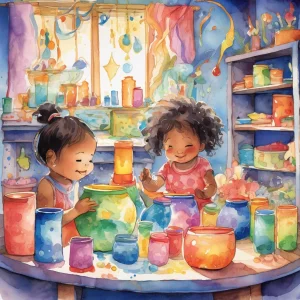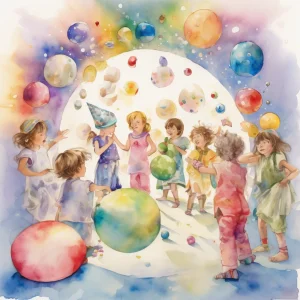Activity
Similar Activities
Clay Sculpting Adventures: Language Discovery and Art
Children’s Age: 6–7 years
Activity Duration: 30 minutes
Engage 6 to 7-year-olds in a creative and educational experience by combining clay sculpting with learning basic foreign language vocabulary. This activity aims to boost creativity…
Activity Duration: 30 minutes
Enchanted Tales: Family and Friends Story Theater
Children’s Age: 2–7 years
Activity Duration: 10 – 25 minutes
An interactive storytelling activity promoting language, academic, and social development.
Activity Duration: 10 – 25 minutes
Sensory Texture Hunt for Developing Skills
Children’s Age: 4–7 years
Activity Duration: 5 – 10 minutes
Let's go on a Sensory Treasure Hunt! We will explore different textures like smooth stones, soft feathers, and rough sandpaper. You can use blindfolds for an extra challenge if you…
Activity Duration: 5 – 10 minutes
Nature Quest: Explore, Learn, and Respect
Children’s Age: 10–15 years
Activity Duration: 0.5 – 1 hours
The Nature Scavenger Hunt activity is designed to help children aged 11 to 15 develop morals, academic abilities, and a love for nature. Prepare by gathering supplies like lists, p…
Activity Duration: 0.5 – 1 hours
Whispers of the Blossoming Earth Journeys
Children’s Age: 11–15 years
Activity Duration: 50 – 55 minutes
Embark on the "Around the World Planting Adventure," a gardening activity designed for children aged 11 to 15. Through planting seeds from different countries, kids will learn abou…
Activity Duration: 50 – 55 minutes
Enchanted Forest: Nature's Treasure Hunt Adventure
Children’s Age: 11–15 years
Activity Duration: 30 – 45 minutes
Explore the wonders of the outdoors with "Nature's Treasure Hunt," a fun and educational activity for children. This outdoor adventure boosts play skills, academic knowledge, and s…
Activity Duration: 30 – 45 minutes
Melodies of Creation: The Musical Painting Adventure
Children’s Age: 2–3 years
Activity Duration: 15 minutes
Engage children aged 24 to 36 months in the Musical Painting activity, promoting creativity and motor development. Provide paper, paints, musical instruments, and lively music for …
Activity Duration: 15 minutes
Colorful Sorting Fun: Exploring Colors and Shapes
Children’s Age: 1.5–2 years
Activity Duration: 5 – 10 minutes
"Colorful Sorting Fun" is an engaging activity designed for children aged 18 to 24 months to boost their fine motor skills, cognitive abilities, and color recognition. Prepare colo…
Activity Duration: 5 – 10 minutes
Enchanted Numbers: Number Hunt Obstacle Course Adventure
Children’s Age: 2–3 years
Activity Duration: 15 minutes
Engage children aged 24 to 36 months with the "Number Hunt Obstacle Course" activity, a fun game that enhances number recognition skills. Set up a safe course with physical activit…
Activity Duration: 15 minutes
Enchanted Nature Hunt: Sensory Exploration Adventure
Children’s Age: 1.5–2 years
Activity Duration: 5 minutes
The Sensory Nature Hunt activity is tailored for children aged 18 to 24 months, offering an engaging outdoor sensory experience. Through exploring nature using touch, sight, and so…
Activity Duration: 5 minutes
Enchanted Discovery: Sensory Treasure Basket Exploration
Children’s Age: 3 – 9 months
Activity Duration: 10 minutes
Explore the Sensory Treasure Basket activity for infants aged 3 to 9 months to support their sensory and cognitive development. Set up a safe exploration space with textured items …
Activity Duration: 10 minutes
Imaginary Adventures: Mini Bowling Feelings Story Game
Children’s Age: 2–5 years
Activity Duration: 10 minutes
An engaging activity promoting sensory development, creativity, reading, and storytelling.
Activity Duration: 10 minutes


